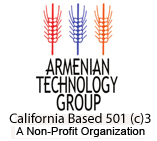Like other regions of the former Soviet Union, agriculture in the Republic of Nagorno Karabakh suffered a sharp downturn in the 1990s. The output of grains remained fairly stable, but production of potatoes, vegetables, grapes, meat animals, milk animals, and eggs fell substantially. The decline indicates the need for investment, improved management practices, and economic stability.
Compared to Armenia, Karabakh was slow to address the issue of agricultural reform. The Karabakh parliament did not establish a system for the privatization of cultivated land on collective farms until 1998. The aims of the legislation, however, are ambitious.
Privatization is intended to boost long-term productivity and facilitate the development of a food processing and distribution system. The legislation established three forms of private ownership:
- The Agrofarm is an organization with stock ownership of the land and facilities of the former collective, with each eligible owner having stock representing his/her share in the farm. A board of directors of owners will select a management team.
- The second form of ownership is the individual farm owner-operator, who makes independent decisions and operates the farm with family labor.
- Thirdly, there is the Group Association, in which a small number of individuals may combine their land to farm as a group, with ownership shares reflecting financial involvement, and with management provided by the group.
Karabakh is blessed with rich soil and a favorable climate. It receives on average 23 inches (58 cm.) of annual rainfall. Supplemental irrigation is possible, but improvements are needed to upgrade the region’s dams, retaining lakes, and distribution laterals, and better manage local rivers.
The Armenian Technology Group (ATG) is working closely with the Karabakh government to establish a viable private agricultural sector. It is involved in the areas of wheat and cereal varietal testing, seed production, vine cultivation, wine, garbanzo beans, honey, processing, and marketing.

Follow Us